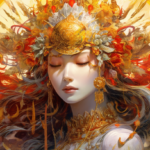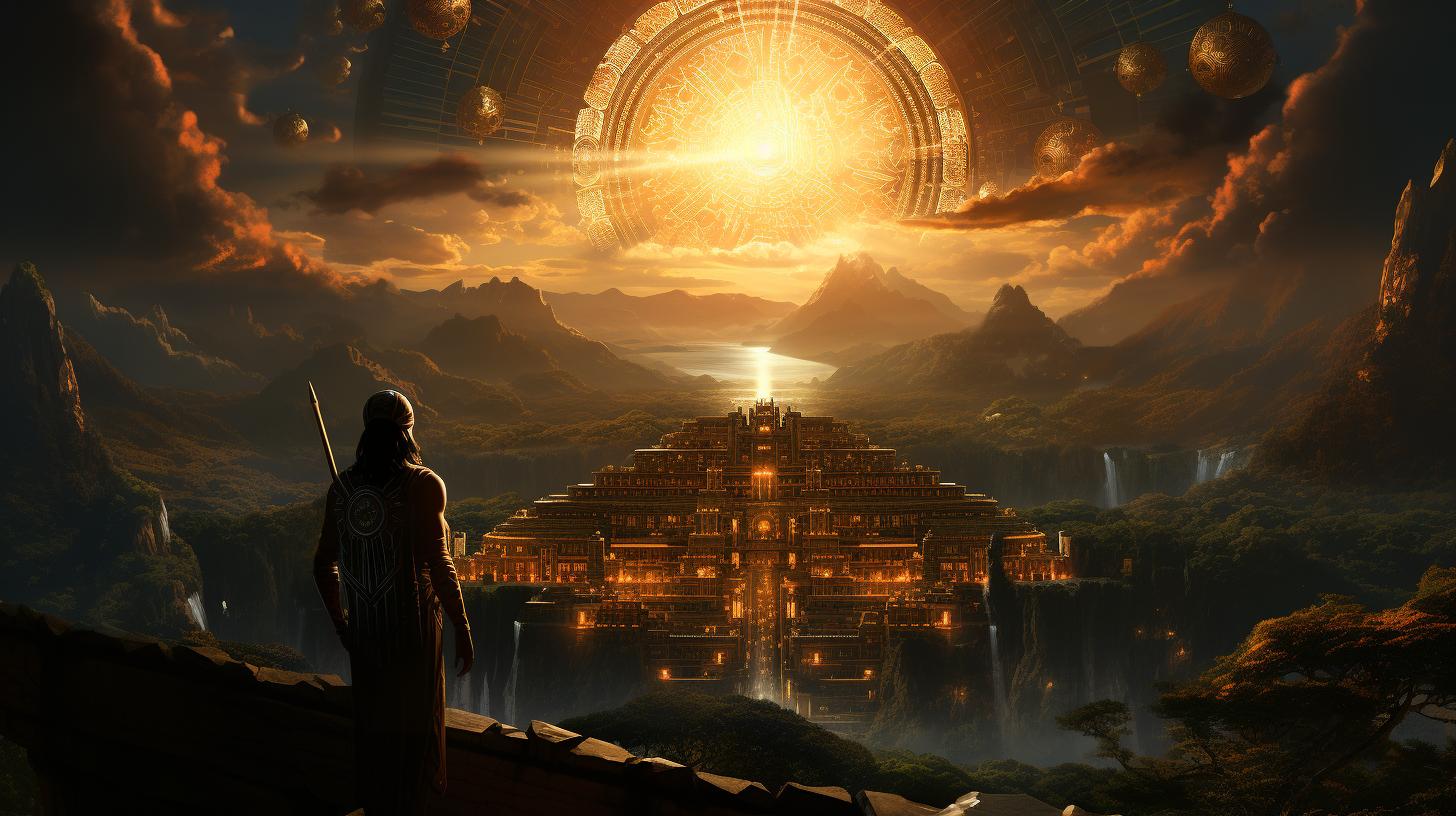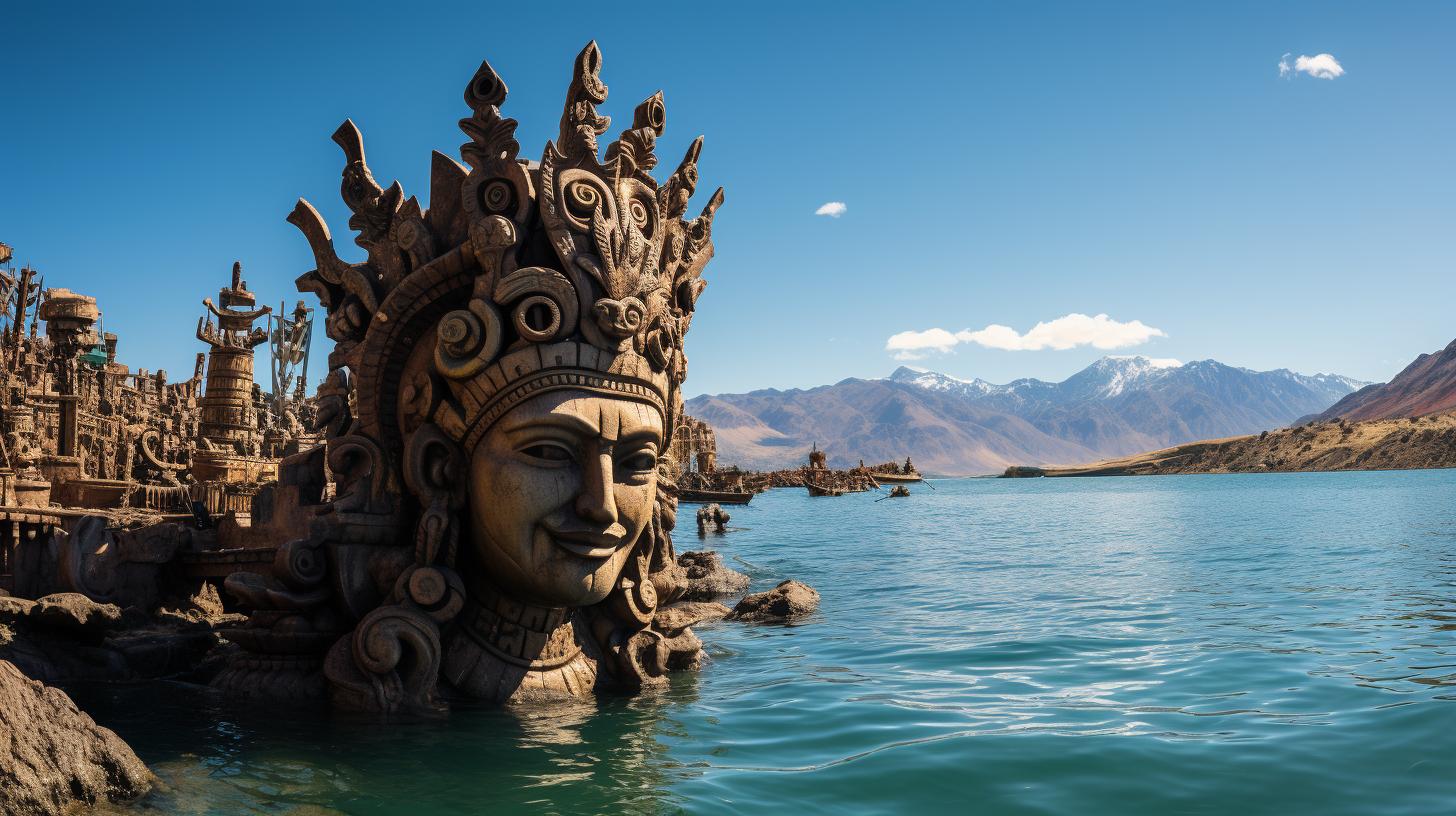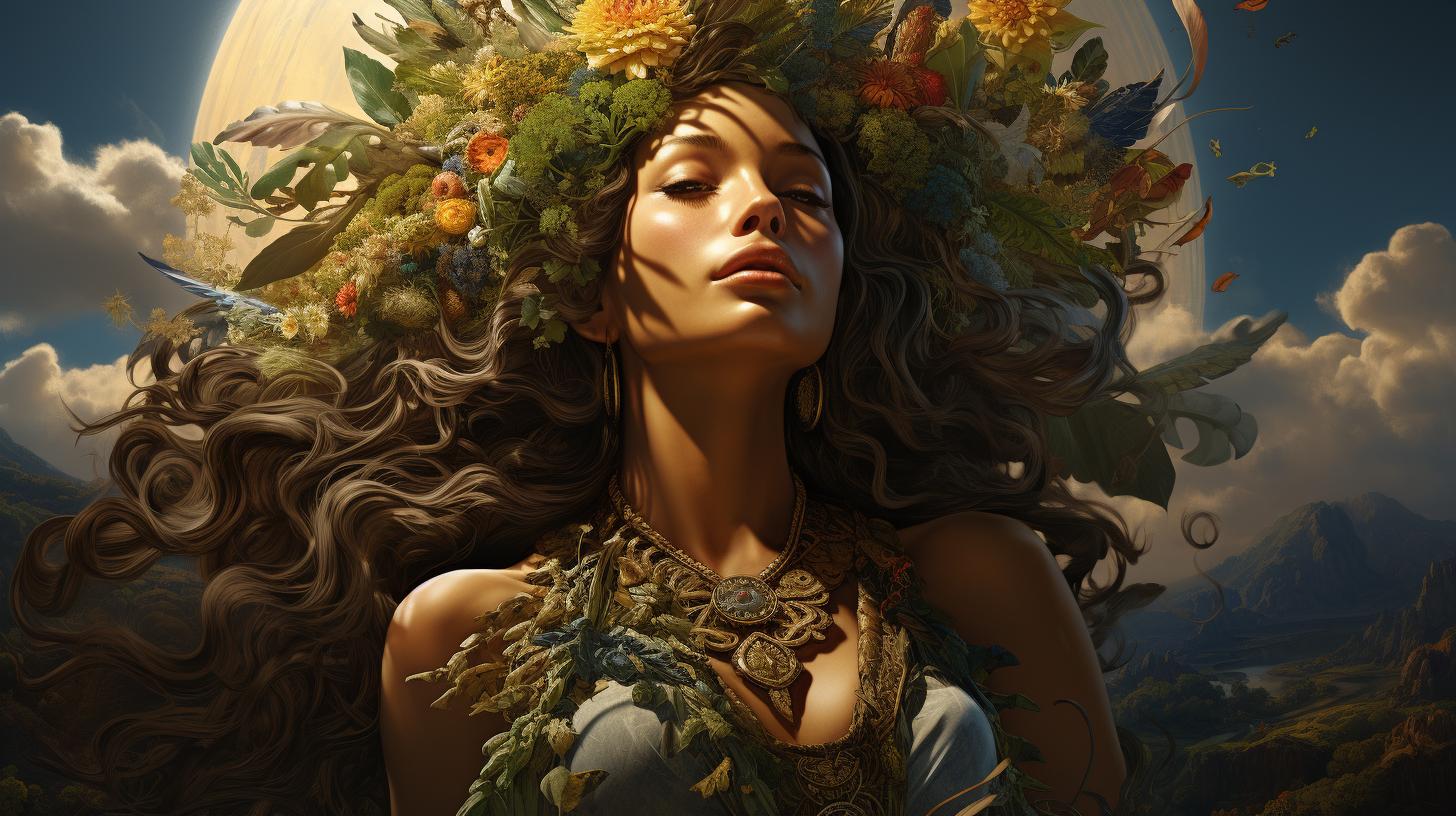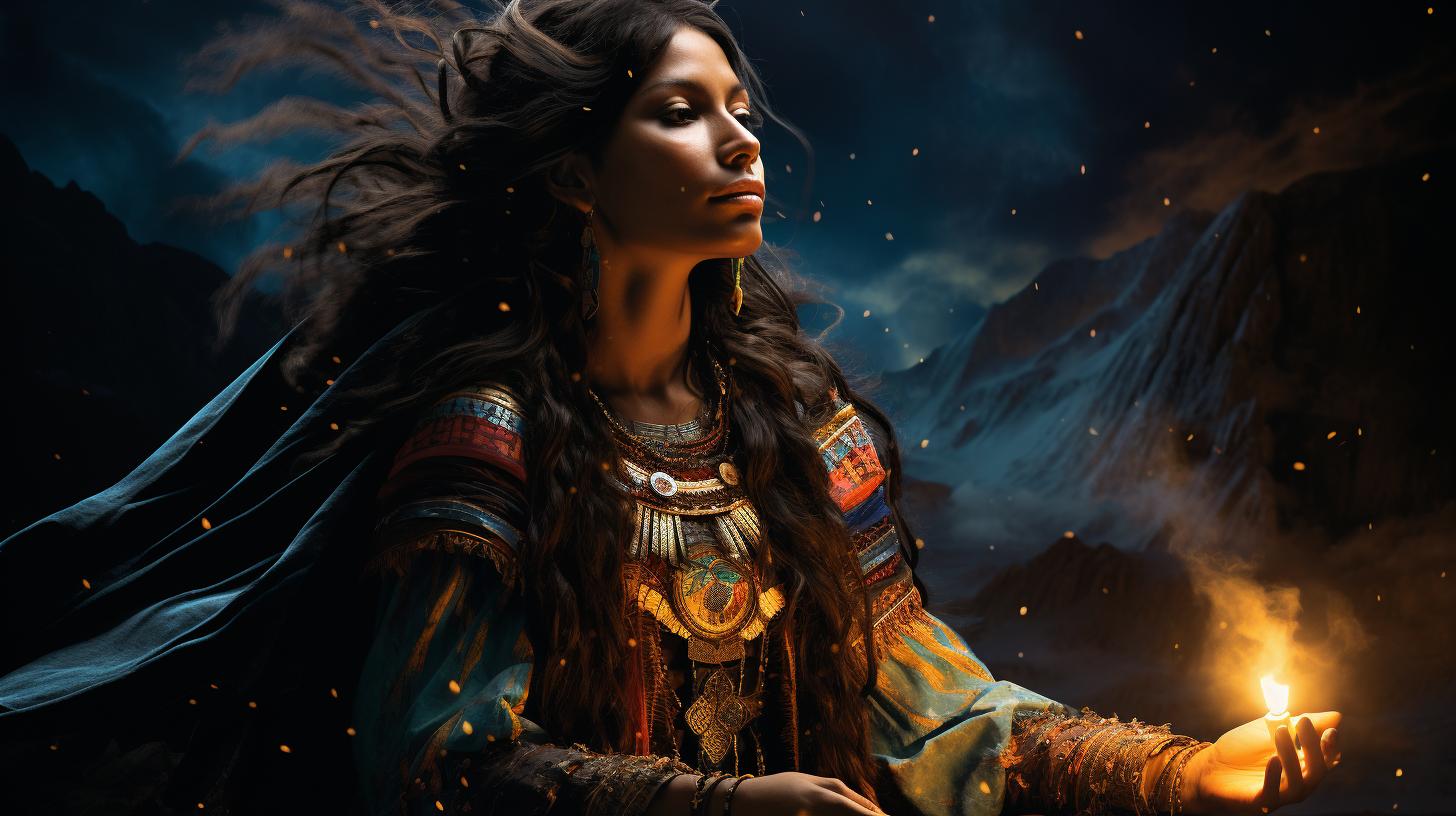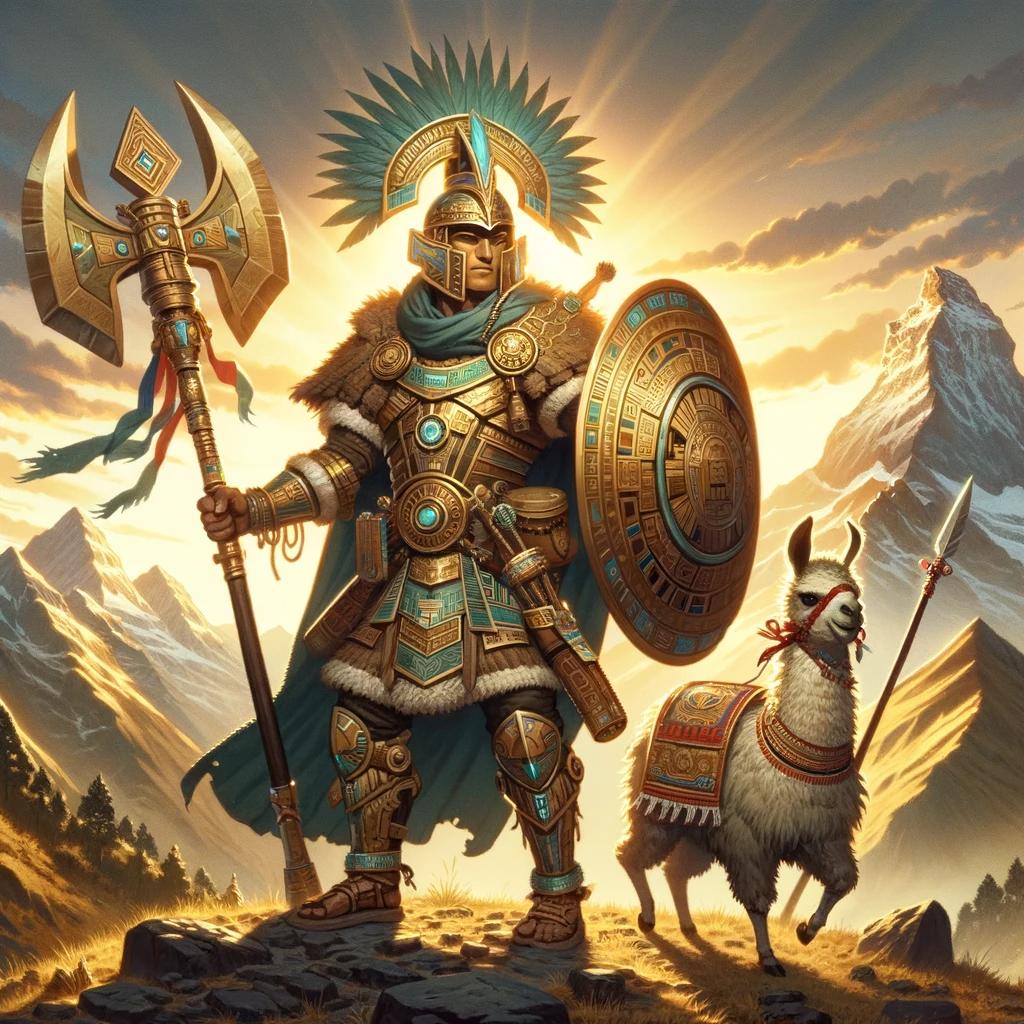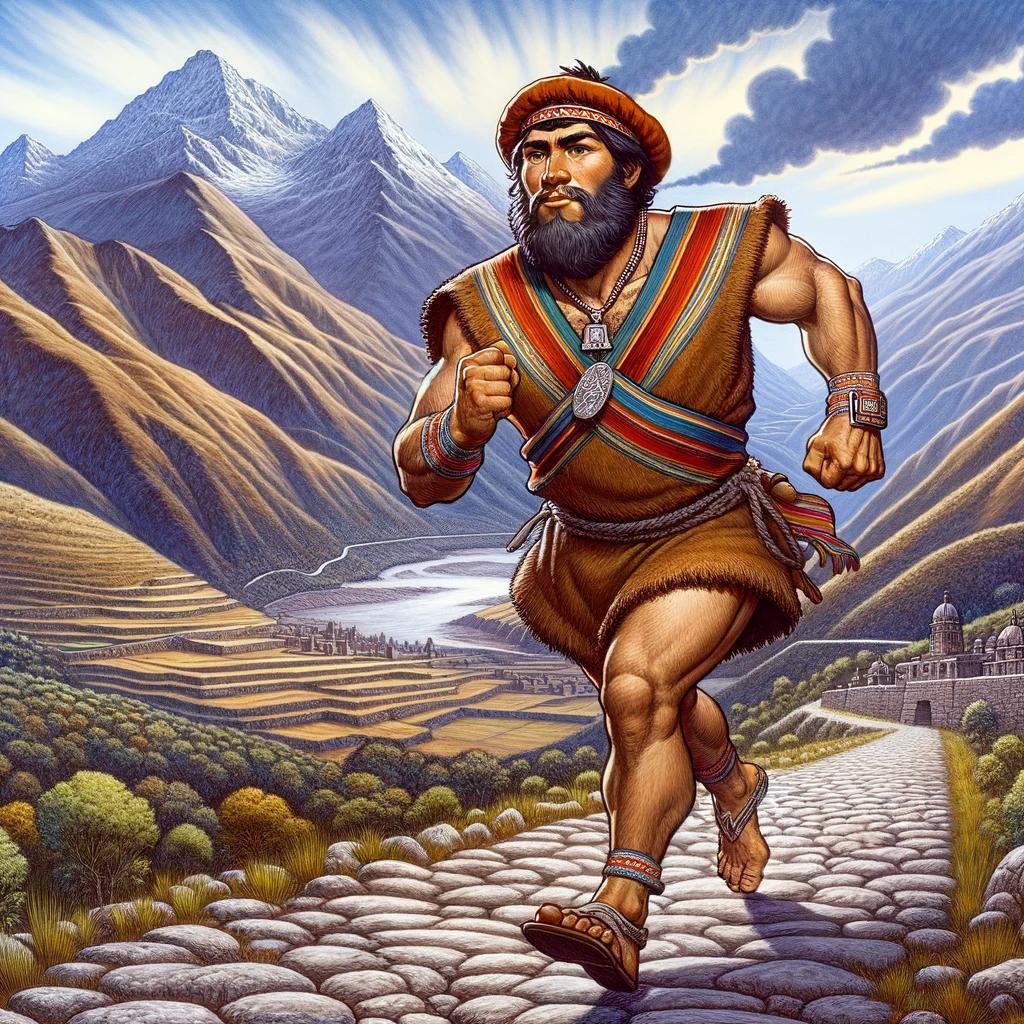Illapa Inca God: Unveiling the Power and Influence in Incan Culture

Illapa Inca god holds immense significance in Inca mythology and culture. Believed to control the weather and associated with thunder, lightning, and rain, Illapa was revered as both a fierce warrior and a provider of agricultural prosperity.
Worshipped through rituals and offerings, Illapa’s influence extended to sacred sites and temples. In modern times, Illapa’s legacy persists in Andean culture, inspiring art, music, and dance. This article delves into the attributes, myths, rituals, and contemporary adaptations surrounding the revered Illapa Inca god.
The Significance of Illapa in Inca Mythology
Illapa, the Inca god of thunder and lightning, holds immense significance in Inca mythology. His role in Inca culture and religion exemplifies his power and influence as a divine figure.
Illapa’s portrayal as a fierce warrior and controller of weather phenomena like thunder, lightning, and rain solidifies his importance among the Inca people.
The Role of Illapa in Inca Culture and Religion
The Inca culture embraced Illapa as a central deity, attributing him with control over natural elements and agricultural prosperity.
Illapa was not only seen as a weather god, but also as a guardian of Inca society, ensuring justice and punishing wrongdoing. The Inca people revered Illapa for his ability to provide life-sustaining rain, which was vital for their agricultural practices.
Beliefs and Myths Surrounding Illapa’s Power
Various beliefs and myths surround Illapa’s power and abilities. It was widely believed that Illapa resided in the Milky Way, guarding a jar of water and using his sling to create thunder, lightning, and ultimately rain.
The Inca people offered sacrifices and performed rituals to appease Illapa during times of drought or to seek his protection against harsh weather conditions.
Illapa’s power extended beyond the physical world, with legends suggesting that he could bestow the “garrote of Illapa” upon those who performed good deeds or showed compassion towards all living beings.
This mystical object had the power to fulfill wishes and even conquer death itself, exemplifying Illapa’s prominence in Inca mythology.
The beliefs and myths surrounding Illapa’s power highlight the profound impact he had on the daily lives and rituals of the Inca people.
His omnipresence in both the natural world and the spiritual realm solidifies his significance as a revered deity in Inca culture.
Illapa: The Inca God of Thunder and Lightning
Illapa, the Inca god of thunder and lightning, held a significant role in Inca mythology and culture. This section delves into Illapa’s attributes and representations, exploring the mythological origins of his power and the symbolism of thunder and lightning in Inca mythology.
An Introduction to Illapa’s Attributes and Representations
Illapa was revered as a powerful deity associated with natural phenomena. Depicted as a fierce warrior adorned in radiant garments, he wielded a sling, a club, and precious jewels. Illapa’s portrayal as a mighty warrior emphasized his dominion over thunder and lightning, inspiring awe and fear among the Inca people.
The Mythological Origins of Illapa’s Power
The origins of Illapa’s power can be traced back to ancient Inca myths and legends. According to Inca beliefs, Illapa was born from the union of Inti, the sun god, and Mama Killa, the moon goddess.
This divine lineage bestowed upon Illapa immense power over natural forces, making him the controller of thunder and lightning.
The Symbolism of Thunder and Lightning in Inca Mythology
In Inca mythology, thunder and lightning were not merely natural phenomena, but manifestations of Illapa’s divine presence and influence. Thunder was seen as the roaring voice of Illapa, a warning or communication from the gods.
Lightning was regarded as the fiery power wielded by Illapa, capable of bringing both destruction and renewal.
The symbolism of thunder and lightning extended beyond their physical manifestations. Thunder represented the authority and jurisdiction of the divine realm, while lightning symbolized the transformative power of the gods, capable of bringing blessings or divine punishment.
Throughout Inca civilization, the veneration of Illapa as the god of thunder and lightning was deeply ingrained in daily life and rituals. The subsequent sections of this article further explore Illapa’s influence in controlling rain and agriculture, his connection to Inca history and society, and his enduring influence in modern Andean culture.
Illapa’s Control Over Rain and Agriculture
Illapa, the Inca god of thunder and lightning, played a crucial role in providing rain for crop cultivation. The Inca people believed that Illapa had the power to control the weather and bring much-needed rain to nourish their agricultural lands.
Illapa’s Role in Providing Rain for Crop Cultivation
The Inca civilization heavily relied on agriculture to sustain their society. Illapa was seen as the deity responsible for ensuring favorable weather conditions, particularly rain, that were essential for successful crop cultivation.
The Inca farmers depended on the regular rainfall to irrigate their fields and ensure bountiful harvests.
The Inca people firmly believed that Illapa’s influence extended beyond the skies, and his intervention was necessary to maintain a stable environment for agriculture.
It was in Illapa’s power to bring rain and fertility to the earth, allowing crops to grow and thrive.
Rituals and Offerings to Appease Illapa for Favorable Weather
In order to appease Illapa and seek his favor for favorable weather, the Inca people performed various rituals and made offerings. These rituals were conducted by priests in sacred sites dedicated to Illapa, such as the Temple of Sacsayhuaman near the city of Cusco.
The offerings made to Illapa included sacred items like fetuses of llamas, which were considered valuable and symbolized the utmost respect and devotion towards the god. These offerings were intended to demonstrate the Inca people’s gratitude for the rain that Illapa provided and to request continued rainfall for their agricultural needs.
Furthermore, the Inca people sought harmony with Illapa through prayers and ceremonies. They believed that by showing reverence and respect towards Illapa, they could ensure his continued benevolence and the prosperity of their agricultural endeavors.
Illapa’s Influence on Inca Agricultural Practices
The belief in Illapa’s control over rain and agriculture influenced various aspects of Inca agricultural practices. The Inca farmers carefully observed natural signs, such as cloud formations and animal behavior, to gauge Illapa’s intentions and predict the arrival of rain.
They also adopted sophisticated irrigation systems to efficiently distribute water across their fields, making use of channels, canals, and terraced farmlands. These practices were designed to maximize the benefits of Illapa’s rainfall and ensure the successful growth of crops.
Illapa’s influence extended beyond mere rainfall; he was considered the embodiment of the agricultural cycle and the provider of life-giving sustenance. The Inca people revered Illapa as the divine force that ensured the well-being of their society through the abundance of food and prosperity brought about by successful agriculture.
- Illapa’s role in regulating rainfall and nurturing agricultural lands was essential for the survival of the Inca civilization
- Rituals and offerings were conducted to appease Illapa and seek favorable weather conditions
- Inca agricultural practices incorporated observance of natural signs and sophisticated irrigation systems influenced by Illapa’s influence
- Illapa’s control over rain and agriculture had a profound impact on the Inca civilization, shaping their farming techniques and dependence on favorable weather conditions.
- The Inca people’s reverence for Illapa extended beyond simple offerings, as they believed their agricultural prosperity relied on maintaining a harmonious relationship with the god of thunder and rain.
- Illapa’s power to control the weather and bring rain was a fundamental aspect of Inca society, ensuring the survival and prosperity of their agricultural endeavors.
Illapa’s Connection to Inca History and Society
The deity Illapa held a prominent position in Inca society, serving as a guardian deity and embodying vital aspects of their history and culture.
Here, we explore Illapa’s significance in various aspects of Inca history and society.
Illapa as a Guardian Deity in Inca Society
Illapa was revered as a powerful guardian deity in Inca society, tasked with protecting the people and the land. His association with thunder, lightning, and rain made him a symbol of both destruction and renewal.
The Inca people believed that Illapa’s wrath could bring punishment to those who committed injustices, highlighting the vital role he played in maintaining social order and moral conduct.
The Worship of Illapa in Inca Temples and Sacred Sites
The Inca civilization constructed temples and sacred sites dedicated to the worship of Illapa.
These places of reverence were built as a means to connect with and pay homage to the powerful deity. The temples often featured intricate artwork and decorations that depicted Illapa’s attributes and his divine presence.
People would visit these sacred sites to seek blessings, offer prayers, and perform rituals to appease Illapa, especially during times of drought or agricultural challenges.
Illapa’s Influence on Inca Rituals and Ceremonies
Illapa’s influence extended beyond daily worship and permeated various Inca rituals and ceremonies.
The Inca people believed that by performing specific rituals and offering sacrifices to Illapa, they could ensure favorable conditions for agriculture, harvests, and overall prosperity. These ceremonies, often accompanied by music, dance, and communal gatherings, were essential in expressing devotion and seeking divine intervention from Illapa.
The rituals and ceremonies linked to Illapa were not limited to agricultural matters. They also encompassed other aspects of Inca life, including rituals related to birth, death, and rites of passage.
Illapa’s presence loomed large during these significant life events, symbolizing protection, guidance, and the presence of the divine in the lives of the Inca people.
Illapa’s connection to Inca history and society reveals a deeply ingrained belief system that intertwined spirituality, nature, and community.
Through worship, rituals, and reverence, the Inca people sought to maintain a harmonious relationship with Illapa and ensure the well-being of their society.
Illapa in Modern Times: Continuity and Adaptation
As the centuries have passed, Illapa’s legacy continues to resonate within contemporary Andean culture. The god’s profound influence is still felt, not only in religious practices but also in various artistic expressions and cultural traditions.
The Legacy of Illapa in Contemporary Andean Culture
Illapa holds a significant place in the hearts of Andean communities. The reverence for this ancient deity has traversed generations and remains an integral part of their cultural identity. Illapa’s association with weather phenomena, fertility, and protection continues to shape belief systems and rituals in modern times.
Illapa’s Influence on Art, Music, and Dance in South America
The image of Illapa has inspired countless artists, musicians, and dancers throughout South America. Paintings, sculptures, and murals depict the god’s might and power, capturing the essence of thunder, lightning, and rain in vibrant and evocative ways.
Traditional dances and musical compositions pay homage to Illapa, recreating the energy and intensity associated with his divine presence.
New Interpretations and Representations of Illapa in Popular Culture
In recent years, Illapa has found a place in popular culture, transcending traditional artistic mediums. His character has been reimagined in literature, movies, and even video games, introducing his persona to a global audience.
Modern interpretations of Illapa demonstrate the enduring significance of this ancient deity and the inspiration he continues to provide in contemporary storytelling and entertainment.
- The continued veneration of Illapa in Andean culture
- The artistic expressions depicting Illapa’s power
- The integration of Illapa into popular culture
Through the centuries, Illapa’s transcendent presence has shaped the cultural fabric of Andean communities.
His influence can be seen in various aspects of modern life, from religious practices to artistic expressions. Illapa’s significance endures, reminding us of the richness and depth of Inca mythology and the perpetual connection between ancient traditions and the present.
.


